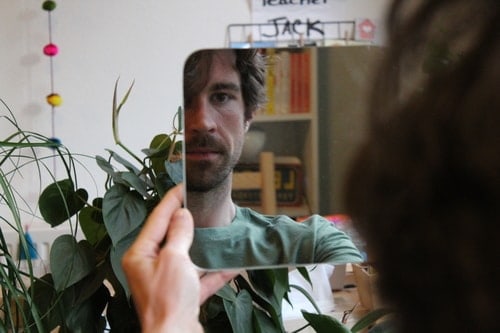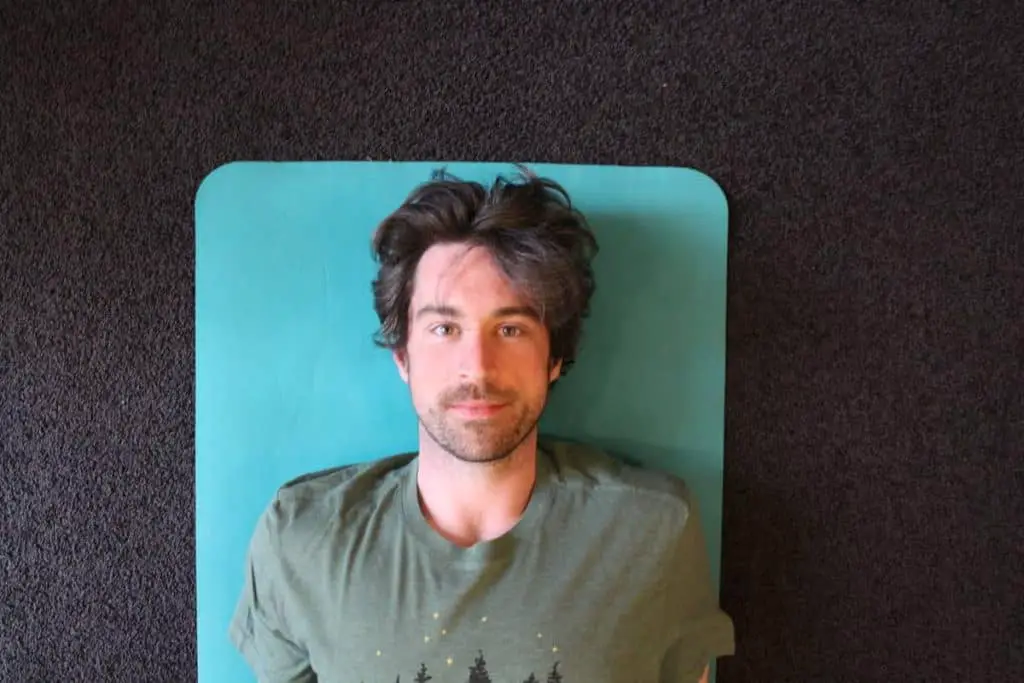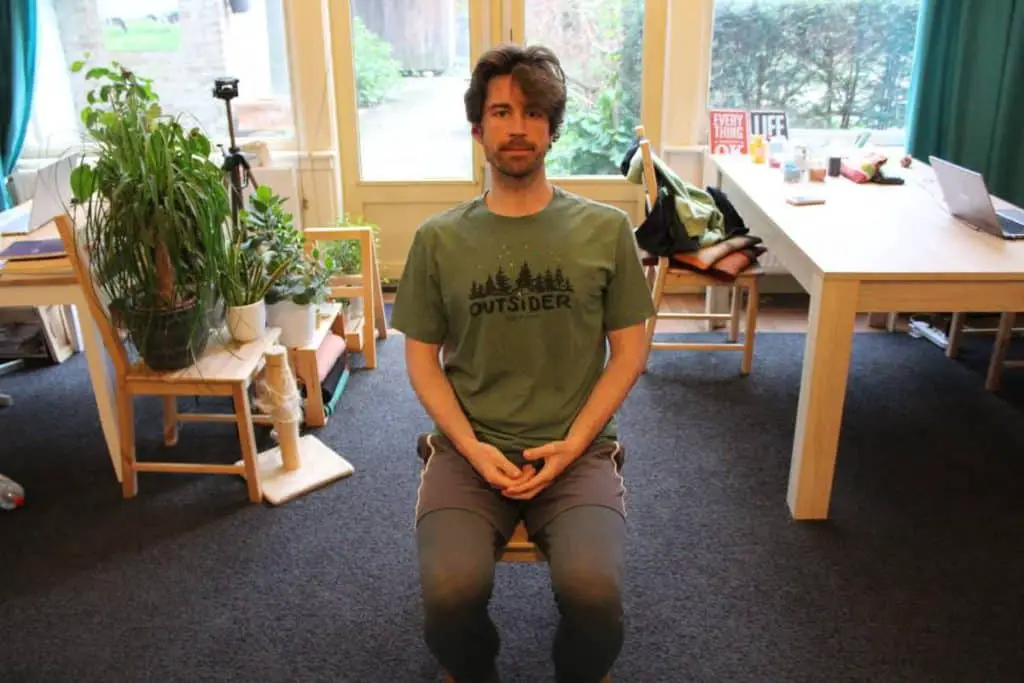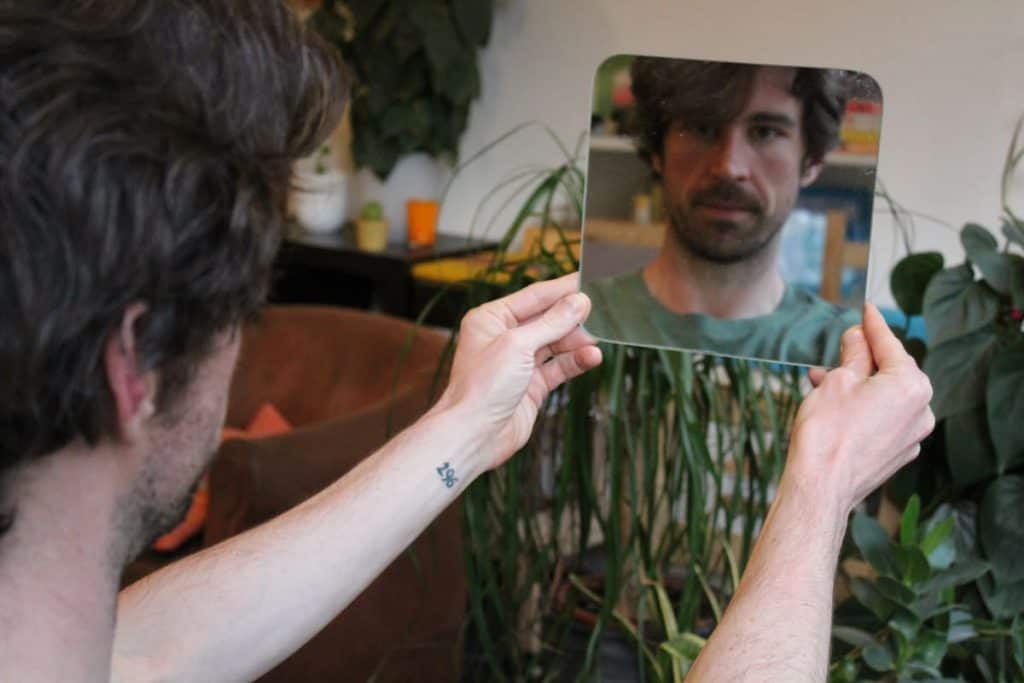
To be really honest with you, I’ve never been a great at meditating. I’ve tried it many times in the past. I have even taken meditation classes at a yoga studio. The results were hit or miss. Still, my interest remained…
At the same time, I have always found that activities such as playing the bass or guitar, playing chess and lifting weights at the gym have been very meditative experiences for me. Some might call it getting into a flow state, but I always felt that it was a type of meditation..
So I got to thinking… Does all of that count as meditating? Can you even meditate with your eyes open? And if so, how?
Meditating with your eyes open is a more advanced technique to get into a meditative state. Since meditation focuses on bringing your attention inwards, you will need to shut out external distractions, by blurring out your vision, focusing your gaze on “nothing”. You can use visual stimulants from videos, pictures, a dot on the wall or a mirror.
Meditating with your eyes open means you can do it literally anywhere, anytime. Once you have the meditating-with-your-eyes-open technique under control, it can be a powerful tool to enhance your meditation practices. It could also mean that you could meditate while engaging in other activities, such as playing the guitar or drawing.
Let’s Look into the Basic Steps First
Meditating with your eyes open is an incredible technique that can help you to meditate anywhere. It might even be a preferred method for some. There are definitely benefits to meditating with your eyes open, once you get the technique right.
Step 1: Get Comfortable in a Quiet Space
If this is your first time meditating with your eyes open, it is important that you try to do this in a space where you will experience few distractions. Once you become more experienced with the technique, you can start practicing in more noisy or busy surroundings, too.
There are different positions that you could try to begin your meditation in:
- Laying flat (Shavasana): lie flat on the floor on your back with your legs and arms relaxed and slightly stretched out.
- Easy pose (Sukhasana): sit straight with your legs in front of you, straighten your back and then cross your legs at the shins.
- Seiza pose (Vajrasana): kneel on the floor and sit between the feet, press the top of your feet into the floor and place your hands on your lap.
Make sure the space you are in is quiet and has few visual stimulants. To train your meditation technique with your eyes open, it is important that you get the technique under control first. You can change your surroundings once you feel ready for it.
Be mindful of where you are, what you hear and what you see.
- How’s your posture?
- How are you breathing?
- How are you feeling?
Once you are mindful about your external environment, you can become mindful of your inner awareness.

Step 2: Focus Your Gaze
Once you sit comfortably, focus on one single target and hold it with your gaze. Then, switch to your regular meditation routine and slowly feel how your body shifts to consciousness.
Easier said than done, right?
The trick to maintain your gaze fixed is to turn off everything else. Stop seeing, stop hearing, stop thinking, stop feeling. Try to look at your focus point without seeing it.
Once you get the fixation right, you will feel that you will start staring without feeling the need to blink your eyes. This might be uneasy at first, so don’t try to not-blink when your eyes feel like blinking. Blink when needed, you will stop blinking when you’re into your meditation (this will go automatically).
Needless to say, do choose a point of focus that is real, like a point on the wall, a picture, or a spot that you can easily recognize. It is important that you know what you’re looking at, so that you can gently bring your gaze back when you lose focus.
Something else that you might want to consider is to choose a point at eye level or something that is right in front of you on the floor (or on the ceiling, depending your position). This way, you can let your body relax once you drift into meditation, without using any efforts to maintain your position.
You can also choose to focus your gaze on a picture of someone who inspires you, like a role model, guru or loved person. Using pictures or images can help you to find answers to questions in step 4.
Step two can take anywhere from one minute to a full hour, depending on how well-practiced and/or focused you are.
Step 3: Acceptance Is Key
At the beginning, your eyes will start to move around finding new focus points (every split second, really). Let it go, let your eyes get used to this new training. You can’t meditate for hours with your eyes open just overnight (if at all)! Gently bring your gaze back as you start shifting. And repeat that until you’re steady.
The most powerful part of meditating with your eyes open is to focus on one thing without getting distracted. It is actually an easy way to clear your mind. You can’t focus on a dot in the wall if you are thinking about exams, work or personal problems.
As I am staring at the doorknob I realize that I need to let go of any other thought that comes to mind in order to keep looking-at-but-not-seeing the doorknob. Even without adding any other step to this meditation technique, you will be training your focus to a very high degree. This means that you might find it easier to apply other meditations in the future.
Meditating with your eyes open takes training and practice. The more you try it, the better you will get at it. Take your time to get into your meditation routine and be easy on yourself.
Remember that sometimes just the practice of bringing your eyes to one focus point can already be very meditative in and of itself! Be kind to yourself and appreciate the fact that you are working on your mind-body relation. Acceptance is key, eyes open or not.
This is also the step during which you want to start going inwards. Meditation is about consciousness and breaking down the mind to reach your inner, true voice. Or some might say the voice of god within you, depending on your motivations.
Stop after this step if you are new to this technique. Like I said, it might take a few times before you master meditating with your eyes open.

Step 4: Meditate
Once your gaze is fixed and your eyes can see without seeing and your mind starts flowing into a world of love and peace and acceptance, your next step is a dedicated meditation.
If you enjoy practicing an empty mind, leave it here and maintain your mind (and gaze) empty for as long as feels good for you.
If you do wish to add another step to your meditation, consider the following options:
- Body awareness
- Mindfulness
- Mind training
- Breathing techniques
Body Awareness
Body awareness meditations focus on checking in with every body part you have. This can be a full body check up, or a specific or particular body part if you’re experiencing pain or energetic blockages.
For a full body scan you basically check in with every body part, connecting, feeling, engaging with the muscles, skin, veins and blood flow. Focus on the energy running through that part and send it healing, positive vibrations. Start with the toes and work your way up to the tip of your head. If you feel like it, include the space around you: your energy doesn’t stop where your body ends.
If you’re focusing on specific body parts, apply the same technique and focus your energy on that particular area. See if you can dissolve blockages by sending positive energy to your areas of focus. You can also send white light to relieve pain. Doing this during an eye open meditation might be trickier if you’re used to visualizing the body parts.
In order to achieve the same connection during an eye-open meditation, you should really turn inwards and focus on your body parts from within. You will quickly notice that you’re not looking through your eyes anymore, but are visualizing even though your eyes are still open.
Mindfulness
While mindfulness and meditation are sometimes used interchangeably, there is a difference between the two terms. Mindfulness is about being aware (period.) and this can be done with or without meditation. Meditation itself is the practice of quieting the mind and some would argue that meditation does just that. Others use meditation as a technique to enlighten themselves and bring their consciousness to a higher level.
Mindfulness during meditation can be achieved with body awareness as described above. You can also become more aware of your environment, by focusing on the sounds you hear and the things you feel – like vibrations from music, plants, animals or people. This technique helps you center your attention on the here and now of your being, focusing literally on what is happening around you.
With your eyes open, you can easily practice mindfulness by looking at the things around you. This would require a shift of focus and might break your concentration, but observing the environment that you are in can be a great meditation practice.
Mind Training & Mantras
The first steps of meditating with your eyes open help to train your mind to achieve a steady state and focus on one thing. You can bring this technique to a higher level and include mantras into your meditation for self-esteem, self-love, forgiveness, etc.
Such mantras are helpful if you want to focus on a specific theme or event that is happening in your life right now. Doing such training during meditation can help your mind deal with emotions in times when you are not meditating, too.
Training your mind can also be a way to “organize” your head-space. One of my favorite meditations is to simply empty my mind and kindly reject any thoughts that may pop up during meditation.
Once your mind is empty, you can focus on important questions in your life, regarding next steps to take, or choices to consider. An empty mind will bring you the right answers from your true inner voice – and you’ll be finding it easier to listen to.
Breathing Exercises
Another one of my favorite exercises for meditation is to do breathing exercises. Honestly, I find these easier than any other kind of meditation because I can control them better. Once you’re able to get into a steady rhythm it is easier to stick to and you won’t be distracted easily.
A super effective but simple breathing exercise is the 4-7-8 method, that is said to reduce anxiety, stress and helps you get to sleep (or relax, in general). It is also a way to connect with your emotions. Many people burst into tears during their first experience with this meditation.
With the 4-7-8 method you breathe in through your nose in four seconds. You then hold your breath for seven seconds and release slowly through your mouth for eight seconds. Try it for yourself and you will feel how powerful this method is!
Breathing exercises can help you in many aspects, especially if you like to be guided in your practices.
Alternative Open-Eye Meditation Techniques
Mirror Meditation
The mirror technique is very similar to the steps described above, the only difference being that you don’t focus on a spot in the wall but on your reflection in the mirror. It is a great tool to enhance self-esteem and to practise being kind to yourself.
The idea of a mirror meditation is to see your true self. The best way to do this is to sit in front of a large mirror in a well-lit room. Once you have settled into a comfortable pose and fixated your gaze onto your own eyes, you will probably start to hear your inner critic. The idea of a mirror meditation is to see how you respond to those critiques.
You yourself are receiving your own critical comments. By separating your reflection from the critic, it will become clear what those comments do to you. They hurt. And why would we want to hurt ourselves? By simply observing our own reaction, our own presence, we can become aware of how we treat ourselves. Eventually, this will lead to a change in thought patterns, shifting to a kinder, nicer internal dialogue.
Read more about Mirror Gazing in this article from Tara Well on Mindful.org.

Playing an Instrument
Like I said in the beginning, I feel that making music and playing an instrument is a meditative practice for me. As I have been playing the guitar for years now, I feel very comfortable with it and could even do it with my eyes closed. I guess this is a condition in order to meditatively play it. Although I guess you could also make music without really knowing what you’re doing.
OK, music as meditation: YES, definitely YES! If the goal of meditation is to free the mind and music is a way for you to clear that mind from whatever is occupying it, then I wholeheartedly agree to music being a form of meditation.
That being said, there is a difference between actually making and practising music and meditative music-making (as I’ll call this from now on). The latter still requires you to empty your mind, focus your gaze on “nothing” and enter a higher level of consciousness.
Drawing and Painting
For those of you who are creative and like to draw and/or paint, you will probably be very familiar with drawing and painting as a meditative technique. Now, of course, it might be hard to draw when you are glaring into the distance, but you could see this technique as a mindfulness practice rather than a meditation.
Yoga
Another very mindful practice that you have to do with your eyes open is yoga. Yoga is a great method to become more aware of your body, how you are feeling, if you’re stiff or sore. Even while moving around you can shift your focus to your body, turning inwards and tuning in on the body parts that you are moving.
On the Go Meditation
Once you will get better at meditating with your eyes open, it will be a small step to getting into a meditative flow wherever you are. And with wherever, I mean wherever! Whether you are on the train, in the metro, or on a plane… On the toilet! Wherever!
When you are literally on the go, you can easily apply mindfulness and awareness techniques to whatever you’re doing. You can walk with purpose, feel the elements, smell nature and share love with the people around you.
On the go meditation is a way of life rather, that is filled with positivity and purpose, you might know it as a five senses meditation, during which you connect with all (or one-by-one) of your five senses, absorbing the environment and energy around you.
The Benefits of Meditation
Meditation is a process during which you quiet the mind and become conscious of your experiences – either emotionally or physically. There are a bazillion ways to achieve a meditative state and every person will prefer different methods. The benefits, however, are real for everyone.
The benefits of meditation are many, but may vary per person. You may also have different reasons for why you start to meditate. According to Healthline, these are the science backed benefits of meditation:
- Reduce stress
- Control anxiety
- Promote emotional health (like positive thinking)
- Enhance self-awareness
- Lengthen attention span
- May reduce age related memory loss
- Can generate kindness
- May help fight addictions
- Improves sleep
- Helps control pain
- Can decrease blood pressure

